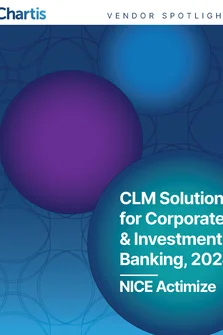<p>Financial crime has been on the increase over the last few years. Recent high profile cases, such as the alleged fraudulent Ponzi scheme linked to Bernard Madoff, internal fraud at Satayam and the rogue trader incident at Societe Generale have highlighted the vulnerabilities of the financial services industry. Financial institutions, consumers and regulators have recognised that financial crime is becoming more complex and is perpetrated by a different class of criminal, who is increasingly sophisticated and using technology as part of their ammunition. Furthermore, Chartis forecasts that the current global recession is likely to increase the frequency of internal fraud, security breaches and false accounting. There is very little doubt that financial institutions have to be on their guard to at least maintain the status quo, let alone deal with the crime that is taking place.</p>
<p>Fraud and money laundering are the two most common crimes seen within the financial services sector. Most firms have now placed financial crime and associated compliance requirements very highly on their corporate agenda. The key trend has been the adoption of a risk-based approach to managing fraud and money-laundering. This has led to policies, procedures and systems that proactively identify, alert, assess and monitor the risk of such events.</p>
<p>Another key driver in recent years has been the cost of losses from financial crime. This is still not formally measured by many financial institutions, but those that are actively quantifying the losses from fraud (including fraud losses that are hidden in the bad-debt and default numbers) have been able to formulate substantial cost-benefit cases for their investment proposals to improve anti-money laundering and anti-fraud processes and systems.</p>
<p>Despite the mission-critical nature of financial crime risk management systems, most financial institutions continue to have a silo-based point-solution approach. The norm is to have multiple anti-fraud and anti-money laundering systems, across different business units, communication channels and using multiple databases. This creates extra expense, inefficiencies and data quality issues across enterprises. Furthermore, it inhibits a firm’s ability to create the links and intelligence required to combat the most sophisticated criminals.</p>
<p>Chartis recommends and predicts that best-practice enterprise-wide financial crime management processes and technology will be based on the establishment of a single-integrated platform, utilising common technology components and data-models, while eliminating gaps, duplication and inefficiencies. The technology platform needs to cater for all types of crime and allocate functionality for real-time/on-line as well as static/off-line data analysis. Ultimately, the financial crime platform will be a sub-set of an enterprise-risk management system providing a total risk dashboard for all key decision makers.</p>
<p>Chartis forecasts the global market for financial crime risk management technology to grow to $3.75bn by 2012, at a compound annual growth rate of 13.1%.</p>
<p>This report examines both the demand and supply side of the market for financial crime risk management technology. It specifically covers the market requirements for fraud and anti-money laundering technologies and forecasts of market size, competitive landscape and best practices. The report also provides detailed profiles of selected vendors such as ACI Worldwide, Actimize, Experian, Fiserv, Lombard Risk Management, Northland Solutions and SAS.</p>
<p>In addition, the report provides detailed financial analysis of Norkom Group PLC, providing key valuation metrics and performance benchmarks.</p>
<p>Other vendors covered in the report include: Bridger Insight, Fair Isaac, Fortent, Intellinx, Memento, Metavante, Senactive, SPSS and Wolters Kluwer.</p>
Only users who have a paid subscription or are part of a corporate subscription are able to print or copy content.
To access these options, along with all other subscription benefits, please contact info@risk.net or view our subscription options here: http://subscriptions.risk.net/subscribe
You are currently unable to print this content. Please contact info@chartis-research.com to find out more.
You are currently unable to copy this content. Please contact info@chartis-research.com to find out more.
Copyright Infopro Digital Limited. All rights reserved.
As outlined in our terms and conditions, https://www.infopro-digital.com/terms-and-conditions/subscriptions/ (point 2.4), printing is limited to a single copy.
If you would like to purchase additional rights please email info@chartis-research.com
Copyright Infopro Digital Limited. All rights reserved.
You may share this content using our article tools. As outlined in our terms and conditions, https://www.infopro-digital.com/terms-and-conditions/subscriptions/ (clause 2.4), an Authorised User may only make one copy of the materials for their own personal use. You must also comply with the restrictions in clause 2.5.
If you would like to purchase additional rights please email info@chartis-research.com


